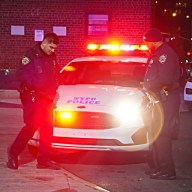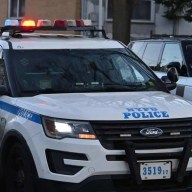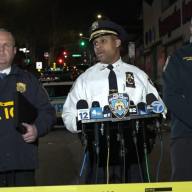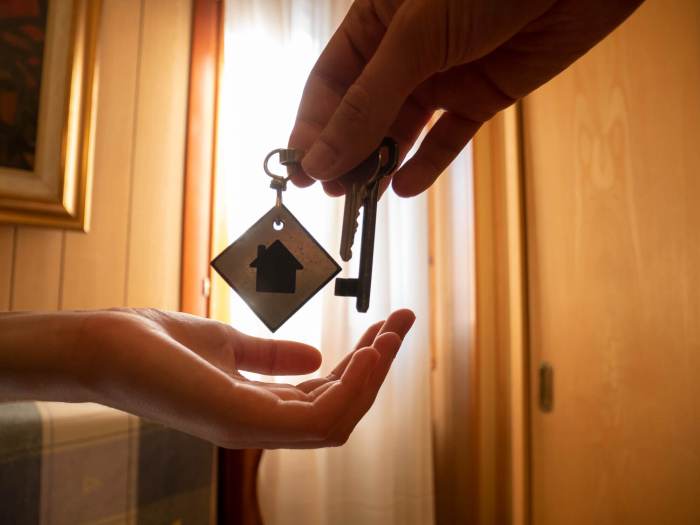The weekday 4 IRT will run express in the Bronx from 7 a.m. to 8:20 a.m. through Friday, December 11. But Deborah James is less than impressed.
James doesn’t understand why the 4 IRT Burnside Avenue station has no elevator or escalator. James, 53, has bad hips and uses a walker to shop on Burnside Avenue. The Jerome Avenue resident rode four buses to reach downtown Manhattan for an appointment in October. There are elevators at the 4 IRT Fordham Road and 161st Street – Yankee Stadium stations but both are badly congested, James said.
James is not alone. She lives at Susan’s Place, a 180-bed residence for physically frail and mentally ill homeless women on Jerome Avenue, between the 4 IRT 176th Street and Burnside Avenue stations. Most Susan’s Place residents struggle to ride the train.
“The bus is crowded,” James said. “The elevators [at Fordham Road and 161st Street] are broken sometimes. What are we supposed to do?”
Assemblyman Nelson Castro, who represents parts of Morris Heights, University Heights and Mount Hope, the neighborhoods that surround the Burnside station, is only the latest leader to petition MTA New York City Transit for an elevator or escalator. In July, Castro suggested that the MTA apply for a federal T.I.G.E.R. stimulus grant to install an elevator or escalator at the Burnside station.
Community Board 5 district manager Xavier Rodriguez, former Borough President Adolfo Carrion Jr., former Senator Olga Mendez, Councilwoman Maria Baez, the Alliance for Community Services, a Burnside Avenue-based non-profit, and the Citizens Advice Bureau, a Morris Avenue-based non-profit, have each requested an elevator or escalator at the station since 2003.
The Burnside station delivers straphangers to Bronx Community College, Roberto Clemente State Park, the Burnside Avenue business corridor and a glut of health and/or social service organizations: Morris Heights Health Center, Davidson Community Center, Burnside Family Care Center, etcetera.
“So many residents are elderly or handicapped,” Castro said. “In Midtown Manhattan there plenty of elevators. The Bronx is underserved.”
The MTA denied Castro’s T.I.G.E.R. request, he said. It has already used a T.I.G.E.R. grant to rework a third 4 IRT rail line. New York City Transit has no plans to install an elevator at the Burnside station, spokeswoman Deirdre Parker said. The station is not among 14 in the Bronx designated as key stations to renovate vis-à-vis federal 1990 Americans with Disabilities Act.
Of those 14, nine are accessible: Pelham Bay Park, Simpson Street, 149th Street-3rd Avenue, 161st Street (4), 161st Street (B/D) Fordham Road, 231st Street, Pelham Parkway and 233rd Street, Parker reported. One is under construction: 180th Street. Three are planned: Hunts Point, Gun Hill Road and Bedford Park Boulevard.
New York City Transit considered ridership and transit connections, nearby destinations and engineering feasibility when it designated the stations. In a 2005 letter to Rodriguez, New York City Transit explained that the Fordham and 161st Street stations are sufficient for 4 IRT Bronx straphangers.
But the letter also revealed that the Burnside Avenue station is suitable for an escalator. To install an escalator at the station would cost $8 million. But a Burnside station escalator was not a New York City Transit capital priority in 2005, due to sparse ridership.
The Burnside station ranked 141st of 468 stations in ridership in 2008. There are some 70 accessible subway stations in the city: 30 in Manhattan, 16 in Brooklyn, 14 in Queens and nine in the Bronx.
Cynthia Olliverre of Creston Avenue, 66, agrees with James. She thinks that the Burnside station needs an elevator or escalator. The 4 IRT express stops at Burnside Avenue but not at Fordham Road.
“My knee is bad,” Olliverre said. “The bus takes forever. I want to protest.”






















